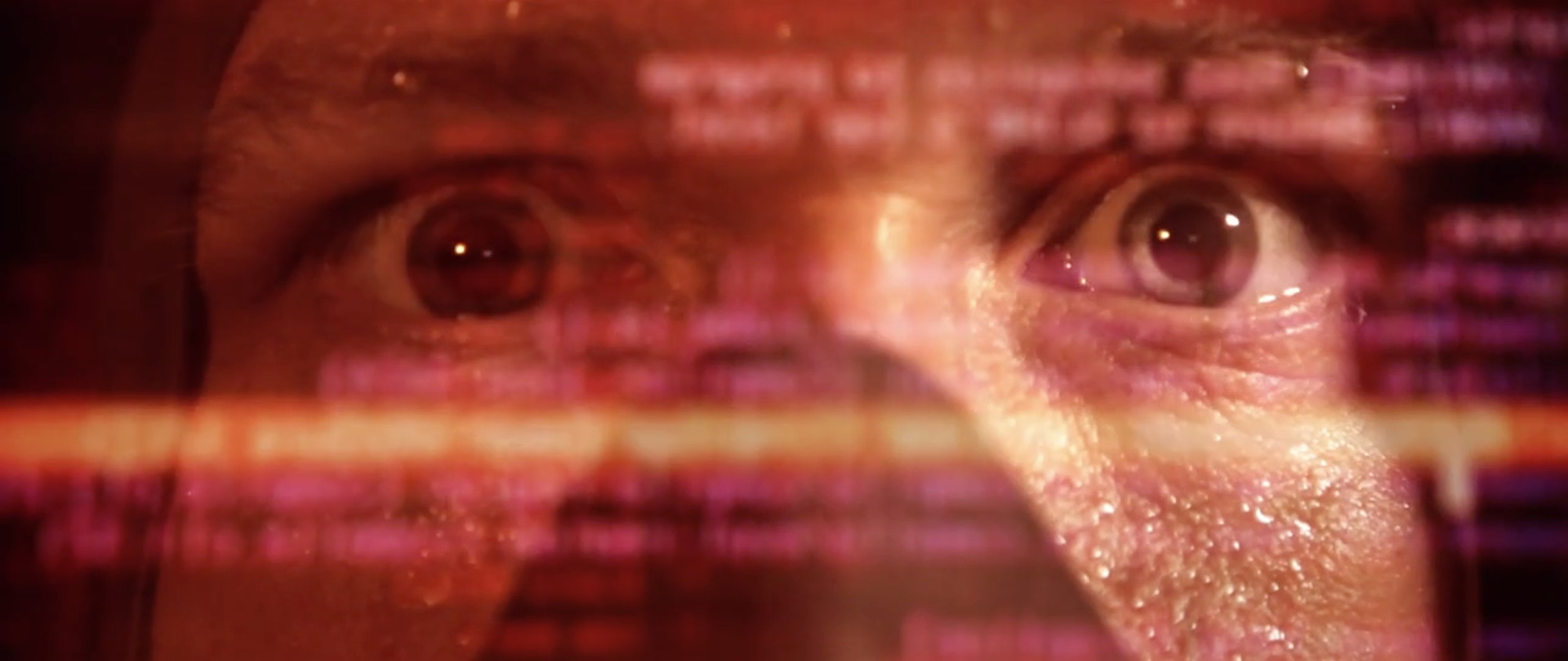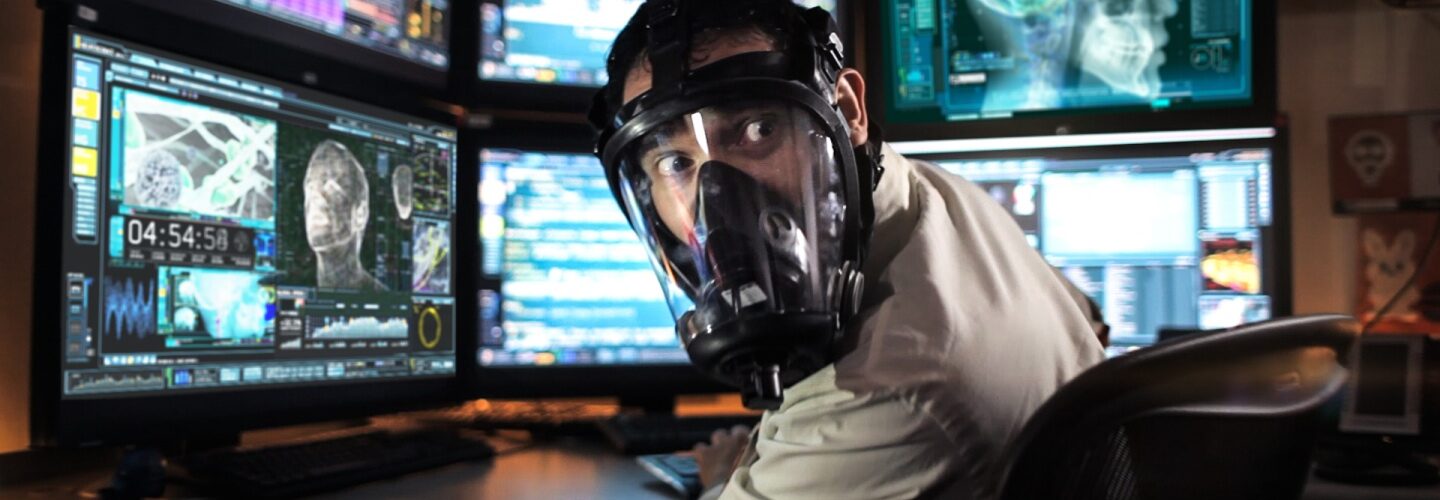
If you think your working conditions are a little draconian, your boss indifferent as to your well being and the pressure you’re under on the intense side, then console yourself that you don’t work alongside the poor operators in RFID programming laboratory 21 in Rick Glenn and Niles Heckman’s short Supervised.
Having found that they made a good creative team after collaborating across a variety of commercials and game cinematics in their post/visual effects day jobs, Glenn and Heckman decide to branch out together on some passion projects. We asked the pair to take us behind the scenes of their work day from hell film.
The script was written around one specific location we had limited access to at the time. We wanted to tell a ‘work together to solve a problem’ storyline. Instead of just making a fluff piece, we feel one of the film’s strongest elements is its narrative’s relevance to our society today which often encourages everyone to only be out for themselves with far too many others being essentially turned into numbers by soulless workplace hierarchies. So the film has a very ‘work together’ theme which made it a story very much worth telling in our current world. Many films made in the last 35 years have had very ‘only one man can do it’ themes made especially popular in the 80s (highly recommend David Sirota’s book ‘Back to Our Future‘ on this subject) so a goal for this project was to tell a story which would be the antithesis of that.
After finishing the script, we had three rounds of casting sessions in LA and ended up securing two great young actors for the lead roles, Daniel Gamburg and Tiago Felizardo, neither of who were new to acting and were both pros through and through. Daniel is a filmmaker first and a fantastic actor second. He had starred in Rick’s previous film ‘LA Bag Brothers‘ and actually teaches acting classes through his production company Enlightened Pictures. He also runs a production company called Musing Pictures while Tiago has an acting background that spans back to to his time as a child actor in Portugal.
The film is a dual production effort between Rick’s Studio-G Productions and my Aurora-Lab. It ended up being shot over 5 nights over multiple months on three Canon DSLR’s – a 5D, 60D, and T2i. Our lighting kit consisted of very cost effective LEDs bought entirely off Amazon.com. They could be considered only one notch up in quality from hardware store work lights, but we are now at a point with lighting technology where they do the job very well and can yield beautiful images, with very little power required and everything running off batteries. Our camera department consisted of our filmmaking collaboration friends Matt Smith and Vernon Wilbert, along with Jason Cooper who ended up being our Gaffer; all using their own hardware which kept our cost way down. Getting the footage to look the way it does took a lot of love in post with trans-coding and heavy color grading.
We’ll hold off on naming the specific location but it was a location within a location and had building security who we knew. The person who’s machines we were using in the space gave us full carte blanche to shoot with all the hardware you see in the film for free. The systems person who managed the machines also helped us to get our graphics onto the screens practically for most monitors in most shots. They were just loopable Quicktime files we full-screened on each machine. Thank goodness they were usable in camera without flicker in the footage. The key screens being there practically was of course fabulous for the actors. The outside location didn’t necessarily know what we were doing and had employees working on the machines you see in the film during the day. We originally suspected the shoot would be a single very long weekend but it ended up being those 5 separate nights spread out over multiple weekends. Because we had to wait for the room to clear before we could start setting up and dressing the space each night, we had to wait around unnoticed for those employees to leave and only then could we shoot. So each time we got cast and crew together, we weren’t sure if we were going to somehow lose the location and get kicked out! So you can imagine how stressful that is to be 3 of 5 shooting nights in and not sure if you’re going to lose our irreplaceable location. We would never recommend having a location which is hard to access for your film. We had to prioritize our shooting list so that we were always shooting the next most plot relevant shot and go down the list so God forbid, we lost the location, we would have only missed out on the least important shots and would have to do editing trickery. Of course, this probably wouldn’t have worked since there isn’t really such a thing as an ‘unimportant shot’. But we never got booted and finished under the radar. The last night we wrapped the martini shot was the greatest feeling. To this day it’s not really recognizable where we shot the film because shortly after we wrapped up the shoot, they pulled all that equipment! Yikes! We both have a cameo in the last scene, the reason being it would have been too difficult to get two new actors into the location.
The graphics are a miss mash of various graphics built from the ground up and some re-constituted. Since the room is suppose to play as an RFID programming lab inside “Sepulchur Industries”, a large private contractor with endless military industrial money, we see it being a beehive of many rooms inside a massive area 51 type underground facility. We wanted the feel to be that of a hyper suspenseful submarine movie like ‘Das Boot‘ with a primarily male dominated cast where everyone is soaked in sweat under extreme stress in confined tight spaces. All of the subject matter on screen is bio-medical; some just adds extra production value and others having to really tell key story/plot points. The edit was very complex because the story line has oscillating shutdown cycles for the two lead actors. Things such as the chips in the skulls and what is going on with the shutdown cycles, made the edit very difficult to lock until the insert shots of screen code were animated in post. About 75% of the post work was screens. The security footage was shot on Go-Pro with of course all of the small cast and crew wearing lab coats duplicating themselves.
On the good/fast/cheap scale, the film was cheaply made but took a very long time. At under $10k US, ‘Supervised’ cost 1/10th of the budget of most other films in our festival run. However it took over a year and a half to complete in post, as a side project amongst other day job work. One of the most rewarding steps along the way of the festival run, was our panel at Hollyshorts where every other filmmaker said the budget for their films, (all of which were $100k to $150k), and then ours was so much less with either comparable or superior production value.
Since sound is 50% of the experience, the score (done fantastically by London based Dan Haigh and Alex Westaway who make up a composing team called Gunship) is original and memorable, ebbing and flowing to support the story with great dramatic impact and tension. The sound editing and mix was very complicated and done by Andrew Duncan who’s work can not be over emphasized on this project. All the sound was phenomenal and made what was an already amazing short into something easily ten times more successful.






